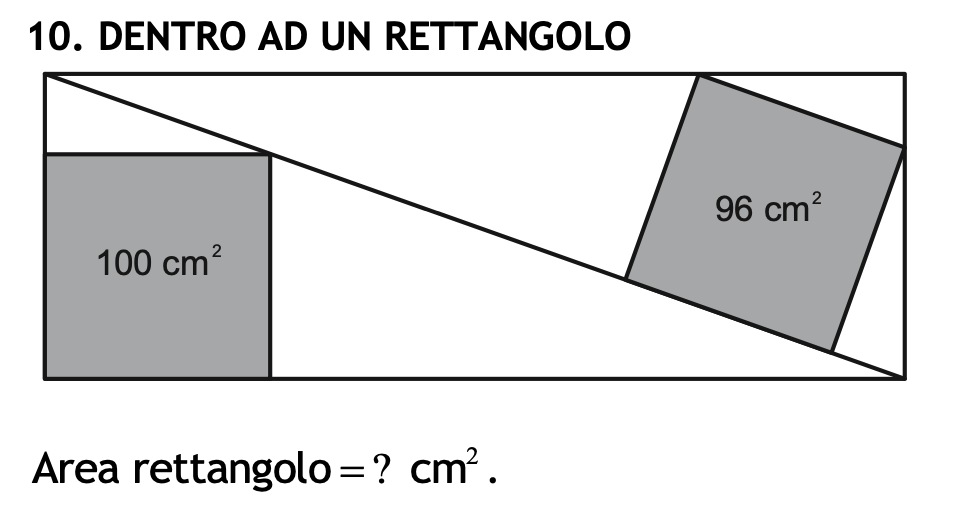
This problem took me a while to solve because of its calculations, but it’s actually very instructive. It makes you see how few conditions can determine a lot.
All of the data is in the figure above, we have to find the area of the rectangle.
Now let where alpha is the biggest of the two angles of one of the two triangles with the diagonal as hypotenuse.
Obviously, all of the triangles generated by the squares are similar to them, hence we can write:
What I’m doing is just applying the Pythagorean Theorem and writing every segment only using j. The little vertical segment above the square of area 100 for example is . The others are defined similarly.
Now let’s solve this equation. After expanding and rearranging we get to:
Let now .
Notice , hence we have
The solutions are 4 and -6, but we only need the positive ones, so 4.
Now we get
The solutions are , but we said that the tangent was the one of the bigger angle, so we get the largest one (but it actually doesn’t matter which you chose since one is the inverse of the other). So we get that the two sides of the rectangle are:
The area equals to their product, which is